Address
304 North Cardinal
St. Dorchester Center, MA 02124
Work Hours
Monday to Friday: 7AM - 7PM
Weekend: 10AM - 5PM
Address
304 North Cardinal
St. Dorchester Center, MA 02124
Work Hours
Monday to Friday: 7AM - 7PM
Weekend: 10AM - 5PM
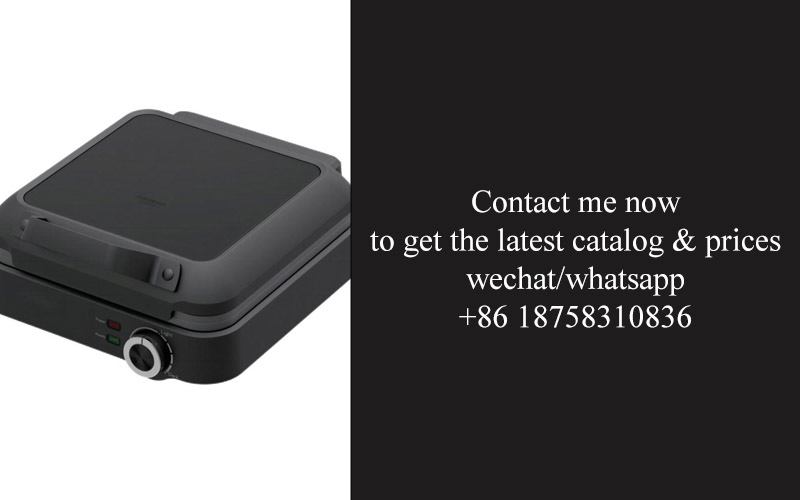
As the grill industry continues to evolve, so does the way manufacturers approach product design and production. With a focus on innovation and efficiency, in-house mold making has emerged as a pivotal factor in shaping the future of grill design. This shift not only promises to bring about a wave of new possibilities but also addresses the needs and preferences of today’s discerning consumers. Let’s delve into how in-house mold making is set to revolutionize the grill market.
The grill industry has undergone a remarkable transformation, with one of the standout trends being the rise of in-house mold making. This shift has not only streamlined production processes but has also led to innovative designs and enhanced quality control. As the demand for custom and high-quality grills continues to soar, manufacturers are increasingly turning to in-house mold making to stay competitive.
Grill manufacturers are recognizing the value of having their own mold-making capabilities. By doing so, they can reduce lead times, ensure consistency in product design, and respond quickly to market demands. The ability to create custom molds in-house allows for the production of unique grill designs that cater to the evolving tastes of consumers.
In the past, manufacturers relied on external mold-making services, which often resulted in longer production cycles and a lack of control over the design process. Now, with in-house mold making, companies can iterate and refine their grill designs more efficiently. This agility has become crucial in a market where innovation is key to success.
Custom molds also enable grill manufacturers to produce parts with greater precision. The intricate details and complex shapes that are becoming increasingly popular in grill design are much easier to achieve with in-house mold making. This precision not only enhances the aesthetic appeal of the grills but also improves their functionality and durability.
One of the most significant benefits of in-house mold making is the reduction in costs over time. While the initial investment in mold-making equipment can be substantial, the long-term savings from reduced outsourcing expenses, faster production times, and improved product quality make it a compelling choice for many grill manufacturers.
The quality control aspect of in-house mold making cannot be overstated. With external mold-making services, there’s always a risk of miscommunication or discrepancies in the final product. By keeping the mold-making process in-house, manufacturers can closely monitor the quality of every aspect of the production, from the design of the mold to the final assembly of the grill.
Market trends are also playing a role in the growth of in-house mold making. The demand for eco-friendly and sustainable products has led to the development of grills made from recycled materials. In-house mold making allows for the creation of molds that can accommodate these new materials, ensuring that the grill design is not only innovative but also environmentally responsible.
Moreover, the rise of smart technology in the grill industry has necessitated the production of more complex parts. In-house mold making is perfectly suited to handle the intricacies of integrating smart features into grill designs, such as Bluetooth connectivity or built-in temperature sensors.
Collaboration between design teams and mold-making experts has become more seamless with in-house capabilities. This integration fosters a culture of innovation, where designers can push the boundaries of what’s possible without the constraints of traditional manufacturing processes.
While the benefits of in-house mold making are clear, there are challenges to consider. The initial setup costs can be high, and there’s a learning curve for employees who need to be trained in mold-making techniques. Additionally, maintaining the precision and longevity of molds over time requires ongoing investment in maintenance and technology upgrades.
Despite these challenges, the grill industry is embracing the trend of in-house mold making with open arms. As consumer preferences continue to shift towards personalized and high-quality products, the ability to create custom molds in-house will become even more crucial for manufacturers looking to stay ahead of the curve.
In conclusion, the rise of in-house mold making in the grill industry is a testament to the power of innovation and the importance of adaptability. By bringing mold-making capabilities in-house, manufacturers are not only able to produce grills that meet the exacting standards of today’s consumers but are also poised to lead the way in the future of outdoor cooking technology.

In the competitive world of grill manufacturing, the shift towards in-house mold making has emerged as a strategic advantage for many companies. This move allows manufacturers to maintain greater control over their production process, from design to final product. Here’s a closer look at the benefits of embracing in-house mold making.
Enhanced Design FlexibilityWith in-house mold making, grill manufacturers can respond quickly to design changes and innovations. Custom molds enable the creation of unique and complex grill shapes and features, setting products apart from competitors. This flexibility also means that manufacturers can iterate on designs based on customer feedback, ensuring that the final product meets the evolving demands of the market.
Improved Quality ControlMaintaining quality throughout the manufacturing process is crucial. By having in-house mold making capabilities, manufacturers can closely monitor the mold production and maintenance. This ensures that the molds are precise and consistent, which directly translates to high-quality finished products. Any issues with the molds can be addressed immediately, reducing the risk of defects and recalls.
Reduced Lead TimesOutsourcing mold making can often lead to long lead times, as manufacturers wait for molds to be produced and delivered. In-house mold making eliminates this dependency, allowing for shorter production cycles. This reduced lead time means that manufacturers can respond faster to market demands and maintain a competitive edge.
Cost Savings Over TimeWhile the initial investment in in-house mold making can be significant, the long-term cost savings are substantial. By producing molds internally, manufacturers can avoid the costs associated with outsourcing, such as shipping, customs duties, and additional fees. Additionally, with consistent use, the molds can last for years, reducing the need for frequent replacements and the subsequent costs.
Enhanced Product CustomizationCustomers today are looking for personalized products that cater to their specific needs. In-house mold making allows for the creation of customized grill designs that can include unique features, such as adjustable heat zones or innovative cooking surfaces. This level of customization can be a major selling point, attracting discerning consumers who value personalized experiences.
Intellectual Property ProtectionWhen relying on external mold makers, there’s always a risk of intellectual property being compromised. By keeping mold making in-house, grill manufacturers can better safeguard their designs and processes. This control over intellectual property is essential for maintaining a competitive advantage and fostering innovation within the company.
Improved Supply Chain EfficiencyHaving in-house mold making capabilities can streamline the supply chain. By reducing the number of intermediaries, manufacturers can create a more efficient production process. This efficiency not only saves time but also reduces the complexity of managing multiple suppliers, leading to smoother operations and less downtime.
Faster Problem SolvingWhen a problem arises with a grill design or a mold, having in-house expertise means that solutions can be implemented quickly. This agility is invaluable in addressing issues before they escalate and impact the production line. It also allows for more rapid prototyping and testing, ensuring that any issues are resolved swiftly.
Enhanced CollaborationIn-house mold making encourages closer collaboration between designers, engineers, and production teams. This cross-functional collaboration can lead to innovative ideas and solutions that might not have been possible with a more siloed approach. The synergy created by having all aspects of the process under one roof can drive creativity and efficiency.
Long-Term Strategic PlanningBy having in-house mold making, grill manufacturers can engage in long-term strategic planning without the constraints imposed by external suppliers. This can include investing in new technologies, expanding the range of products, or even diversifying into new markets, all while maintaining control over the quality and consistency of their products.
In conclusion, the advantages of in-house mold making for grill manufacturers are multifaceted, offering everything from increased design flexibility to better intellectual property protection. As the industry continues to evolve, the ability to adapt and innovate through in-house mold making will remain a critical factor in success.

In the world of grill manufacturing, innovation is not just about new features or technologies; it’s about the ability to craft products that meet the evolving needs and desires of consumers. Custom molding has emerged as a key player in driving these innovations, offering a plethora of benefits that shape the design and functionality of modern grills.
The Art of Custom Molding in Grill Design
Custom molding allows grill manufacturers to create intricate and complex designs that are both visually appealing and functional. Whether it’s the unique shape of the grill hood, the innovative handle design, or the intricate patterns on the grill grate, custom molding provides the flexibility to push the boundaries of what’s possible in grill design.
Enhanced Aesthetics
One of the most immediate benefits of custom molding is the enhancement of the grill’s aesthetic appeal. Molding can incorporate intricate details, curves, and contours that add a sense of sophistication and style. This aesthetic advantage is particularly crucial in the competitive grill market, where consumers are not only looking for functionality but also for products that complement their outdoor spaces and personal tastes.
Improved Functionality
Custom molds can also lead to improved functionality. By designing and manufacturing molds in-house, grill manufacturers can create components that fit perfectly, reduce unnecessary gaps, and provide a seamless cooking experience. For example, a custom mold for a grill’s ventilation system can ensure efficient airflow without compromising on structural integrity.
Quick Prototyping and Iteration
The ability to produce custom molds in-house significantly reduces the time it takes to bring new grill designs to market. With traditional manufacturing methods, the design process often involves multiple stages of approval, prototyping, and production, which can be time-consuming. Custom molding allows for quick prototyping, allowing manufacturers to iterate designs swiftly and efficiently.
Cost-Effective Customization
While some might assume that custom molding is an expensive process, it can actually be more cost-effective in the long run. By controlling the entire process from design to production, grill manufacturers can reduce costs associated with outsourcing or importing molds. This control also ensures that materials are used efficiently, minimizing waste.
Enhanced Material Options
Custom molding opens up a world of possibilities when it comes to material selection. Whether it’s high-temperature-resistant plastics, durable metals, or eco-friendly materials, custom molds can be designed to accommodate various materials, allowing manufacturers to offer a wider range of options to their customers.
Increased Durability
The precision and consistency of custom molds lead to more durable grill components. Each part produced through custom molding is likely to be more uniform and less prone to defects, resulting in a longer lifespan for the grill. This not only benefits the end-user but also enhances the reputation of the manufacturer.
Sustainability Focus
In recent years, sustainability has become a key concern for consumers and businesses alike. Custom molding allows grill manufacturers to incorporate sustainable practices into their production processes. From using recycled materials to designing products that are easier to recycle, custom molds can help create more environmentally friendly grills.
Adaptability to Market Trends
The grill market is constantly evolving, with new trends emerging all the time. Custom molding enables manufacturers to adapt quickly to these trends, whether it’s incorporating smart technology, improving portability, or offering modular designs. This adaptability is essential for staying competitive and meeting the demands of a changing market.
Conclusion
The integration of custom molding into grill product design has revolutionized the industry. It has not only allowed for the creation of aesthetically pleasing and functional grills but has also provided manufacturers with a competitive edge in a highly dynamic market. By leveraging the benefits of custom molding, grill manufacturers can continue to innovate and offer consumers products that are not just ahead of the curve but also resonate with their values and lifestyles.

In the realm of grill manufacturing, the shift towards in-house mold making has revolutionized the industry. Let’s delve into a few case studies that showcase the successful implementations of this trend.
Customization at Scale: One grill manufacturer, known for its sleek designs, embraced in-house mold making to cater to the growing demand for personalized grills. By developing proprietary molds, they were able to produce unique designs that resonated with consumers, leading to a significant increase in custom orders.
Quality Control and Efficiency: A mid-sized grill producer faced challenges with quality control when outsourcing mold making. By bringing the process in-house, they gained better oversight and reduced the risk of defects. This led to a more efficient production line and a noticeable improvement in product quality.
Cost Reduction and Profitability: A budget-friendly grill brand found that outsourcing mold making was eating into their profits. By establishing an in-house mold making facility, they cut down on transportation costs and the middleman’s fees. This move not only improved their bottom line but also allowed them to offer more competitive pricing to their customers.
Rapid Prototyping and Market Response: A startup grill company needed to quickly adapt to market trends. With in-house mold making, they could prototype new grill designs in a matter of days rather than weeks. This agility enabled them to respond swiftly to consumer feedback and launch innovative products that captured the market’s attention.
Innovation in Material Usage: A company specializing in eco-friendly grills utilized in-house mold making to experiment with sustainable materials. By creating molds that could handle unconventional materials, they were able to produce grills that were not only environmentally friendly but also durable and aesthetically pleasing.
Enhanced Collaboration: A manufacturer of high-end grills realized that in-house mold making fostered a collaborative environment among designers, engineers, and production teams. This cross-functional approach led to the creation of grills that seamlessly blended form and function, resulting in a product that was both visually stunning and highly functional.
Global Market Expansion: An international grill manufacturer aimed to expand its market reach. By setting up in-house mold making capabilities, they could tailor their products to meet the specific requirements of different regions, from adjusting to local climate conditions to customizing designs to appeal to local tastes.
Brand Differentiation: A niche grill company that focused on outdoor enthusiasts needed to stand out in a crowded market. Through in-house mold making, they developed unique features and designs that set their grills apart, reinforcing their brand identity and attracting a loyal customer base.
Long-Term Strategic Planning: A grill manufacturer with a long-term vision for growth invested in in-house mold making as part of a broader strategic plan. This move allowed them to control their product development cycle, ensuring that they could adapt to market changes and technological advancements over time.
Customer Satisfaction and Retention: By offering a wider range of grill options through in-house mold making, a company saw a significant boost in customer satisfaction. The ability to customize features and designs led to higher retention rates and positive word-of-mouth, further strengthening their market position.
These case studies highlight the diverse benefits that in-house mold making can bring to grill manufacturers, from enhancing product quality and reducing costs to fostering innovation and strengthening customer relationships.
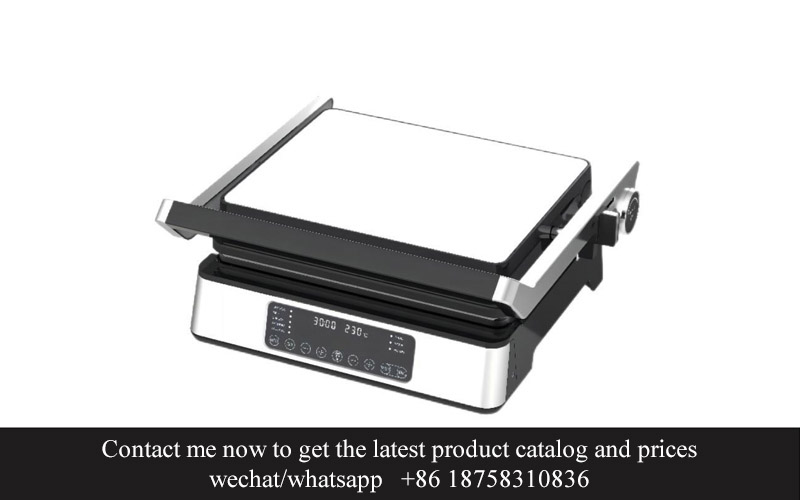
The evolving landscape of the grill industry has been significantly influenced by market trends and consumer preferences, which are shaping the way in-house mold making is approached. From the rise of smart features to the emphasis on sustainability, these factors are driving innovation in the field.
Consumer demand for convenience has spurred the creation of compact, easy-to-use grill designs. As the trend towards smaller living spaces and busy lifestyles grows, manufacturers are turning to in-house mold making to develop grill components that are not only functional but also space-saving. This has led to the development of grill lids with integrated cooking timers, and compact grill stands that double as storage units, showcasing the fusion of technology and form in custom molds.
Eco-consciousness is another key trend that’s reshaping in-house mold making. As consumers become more aware of the environmental impact of their purchases, there’s a growing preference for sustainable materials. This shift has prompted manufacturers to explore biodegradable plastics and recycled metals in their mold designs. By using these materials, not only are they reducing their carbon footprint, but they’re also tapping into a market segment that values sustainability.
The customization of grill designs to cater to diverse consumer tastes has also become a focal point. Personalization ranges from color options to unique shapes and sizes, and in-house mold making is pivotal in achieving this level of customization. A case in point is the rise of themed grills, such as those inspired by popular sports teams or outdoor activities, which are capturing the interest of niche markets.
In recent years, there’s been a significant surge in the demand for smart grills that offer connectivity and advanced features. Consumers are no longer just looking for a cooking surface; they want a smart kitchen appliance that can be controlled remotely. In-house mold making has played a crucial role in creating intricate designs for grill components that house smart technology, such as Bluetooth-enabled temperature controls and built-in grilling apps.
The trend towards healthier eating habits is also influencing mold making. Consumers are seeking grills that allow for healthier cooking methods, like direct grilling and indirect smoking, which can reduce the fat content of the food. As a result, grill manufacturers are turning to custom molds to create more versatile cooking surfaces and accessories, such as adjustable height racks and smoking boxes.
Functional aesthetics are another aspect that’s becoming increasingly important. Consumers want grills that look as good as they perform. In-house mold making allows for the creation of sleek, modern grill designs that appeal to a broader market. This includes the use of high-quality finishes and materials that are not only durable but also visually appealing.
In the realm of in-house mold making, there’s a clear emphasis on the integration of safety features. With the rise in awareness of food safety, grills are being designed with components that prevent cross-contamination and make it easier to clean. Custom molds are being used to produce seamless joints and easy-to-clean surfaces that contribute to a safer grilling experience.
Lastly, the global culinary scene has sparked an interest in diverse grilling techniques, which are prompting manufacturers to develop specialized molds. From Korean BBQ-style grills with their distinct hexagonal grids to Japanese yakitori grills, in-house mold making is enabling the creation of unique cooking surfaces that cater to specific culinary trends.
In conclusion, the grill industry is witnessing a transformative period where market trends and consumer preferences are pushing the boundaries of what’s possible with in-house mold making. From embracing sustainability to catering to technological advancements and health-conscious consumers, the future of grill design is being sculpted by the mold making process.
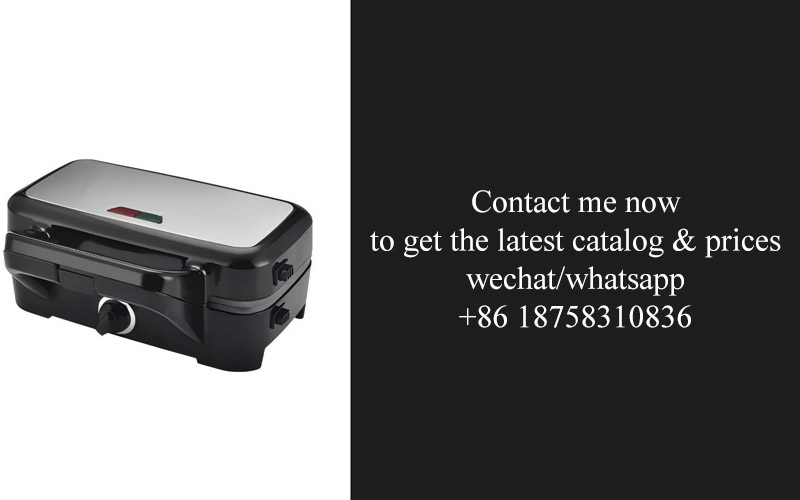
In the competitive landscape of the grill industry, the role of in-house mold making has become a pivotal factor in achieving cost efficiency and maintaining stringent quality control. By bringing the mold-making process in-house, manufacturers can streamline operations, reduce dependencies on external suppliers, and ultimately deliver high-quality products at competitive prices. Here’s how in-house mold making contributes to these crucial aspects:
Manufacturers gain better control over the mold-making process, ensuring that the specifications and designs align perfectly with their product requirements. This direct oversight minimizes the risk of miscommunication and errors that can occur when working with external mold suppliers.
With in-house mold making, companies can respond quickly to changes in design or production needs. This agility allows for the rapid prototyping of new grill models, which is especially important in a market where innovation is key to staying ahead of the competition.
Cost savings are a significant benefit of in-house mold making. By eliminating the need to outsource mold production, manufacturers can reduce expenses associated with shipping, customs duties, and potential quality issues that arise from molds not meeting specifications.
The cost of molds can be substantial, but by producing them in-house, manufacturers can spread out the investment over multiple production cycles, making the initial cost more manageable.
Quality control is enhanced through in-house mold making. Manufacturers can closely monitor the mold maintenance and repair process, ensuring that the molds remain in optimal condition for extended periods. This ongoing maintenance is crucial for the longevity and performance of the grill products.
In-house mold making allows for the precise tuning of molds to accommodate specific production requirements, such as material properties and part tolerances. This precision is essential for creating grills that are both aesthetically pleasing and functionally reliable.
By having direct control over the mold-making process, manufacturers can implement the latest technologies and materials without waiting for external suppliers to catch up. This can lead to the development of advanced grill features that might not be possible with traditional molds.
Regular mold maintenance and calibration are critical to maintaining product quality. In-house mold making enables manufacturers to conduct these tasks promptly, reducing the risk of defects in the final product.
The ability to create custom molds in-house means that manufacturers can optimize the design for production efficiency. This can result in reduced material waste and improved assembly processes, further contributing to cost savings.
In the realm of quality control, in-house mold making allows for the immediate identification and rectification of issues. When a problem arises, the mold can be adjusted on the spot, rather than waiting for a response from an external supplier.
The production of high-quality grill components is dependent on the precision of the molds. In-house mold making ensures that the molds are consistently calibrated to the highest standards, which is essential for producing components that fit perfectly and perform reliably.
The integration of in-house mold making into the manufacturing process fosters a culture of continuous improvement. Manufacturers can iterate on designs and molds based on real-time feedback, leading to a continuous cycle of innovation and quality enhancement.
The cost savings and quality improvements achieved through in-house mold making can be reinvested into other areas of the business, such as marketing or research and development, allowing for further growth and market penetration.
In conclusion, in-house mold making plays a crucial role in both cost efficiency and quality control for grill manufacturers. By having direct control over the mold-making process, companies can ensure that their products meet the highest standards while also managing costs effectively, positioning them for success in a highly competitive market.
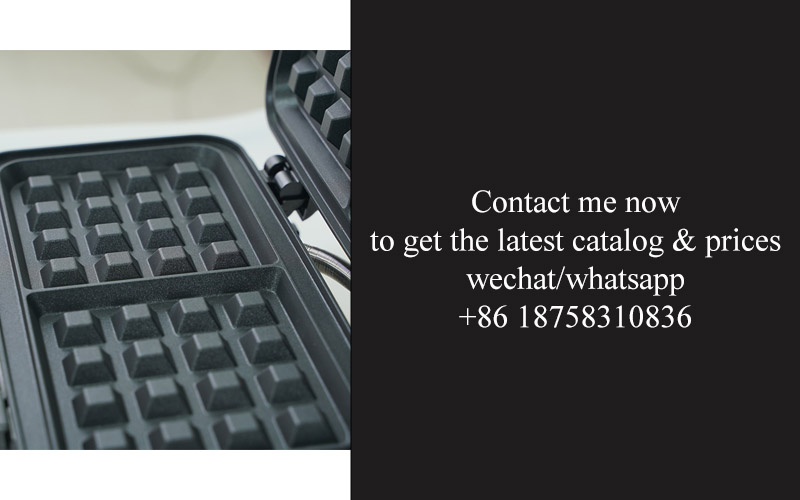
Navigating the complexities of scaling in-house mold making operations can be a daunting task for grill manufacturers. As demand grows and product lines expand, the intricacies of maintaining quality and efficiency become increasingly challenging. Here’s an exploration of some of the common challenges and innovative solutions that have been adopted in this field.
In the quest to keep pace with market demands, grill manufacturers often find themselves struggling with the constraints of limited production capacity. This can lead to bottlenecks in the mold making process, where each intricate design requires precise attention to detail.
One solution lies in optimizing the workflow. By streamlining the production process, manufacturers can reduce the time it takes to create new molds. This can involve investing in advanced machinery that can handle multiple tasks simultaneously, thereby increasing output without sacrificing quality.
Another challenge is the cost implications of scaling up mold making operations. As the volume of orders increases, so does the need for more molds, which can be expensive to produce. To counter this, some companies have turned to modular mold designs. These allow for greater flexibility and can be easily adjusted to accommodate different product variations, reducing the need for a complete mold overhaul for each new model.
Maintaining consistency in quality across a larger scale of production is another hurdle. In-house mold making enables manufacturers to have complete control over the production process, but with growth comes the risk of inconsistencies. To tackle this, rigorous quality checks have become integral to the process. Implementing a zero-defect policy and using statistical process control (SPC) helps identify and correct issues before they escalate.
The complexity of managing a diverse range of materials used in grill manufacturing also poses a challenge. Each material requires a different approach to mold making and can present unique challenges during the production process. Solutions here involve investing in a variety of molding technologies, such as injection molding, blow molding, and die casting, to accommodate different material requirements.
As operations expand, the logistics of inventory management become more critical. Ensuring that the right molds are available at the right time without overstocking or understocking can be a delicate balance. Advanced inventory management systems, paired with real-time tracking software, help in keeping the inventory in check and reducing waste.
The skill level of the workforce is a significant factor in the success of in-house mold making operations. As the scale grows, so does the need for highly skilled mold makers. Manufacturers are increasingly investing in training programs to develop the expertise required to handle complex molds. This not only ensures the retention of talent but also the ability to innovate and adapt to new challenges.
Another challenge is the environmental impact of mold making operations. As awareness of sustainability grows, manufacturers are under pressure to reduce their carbon footprint. Implementing eco-friendly practices, such as using biodegradable materials and reducing energy consumption, can be part of the solution.
Furthermore, the globalization of the grill market means that in-house mold making operations must be adaptable to various regulatory standards and certifications. This requires a commitment to continuous improvement and staying abreast of international regulations. Collaborating with regulatory experts and maintaining a flexible approach to compliance can help navigate these complexities.
The integration of technology has also presented both challenges and opportunities. While advanced software can greatly enhance the design and production process, it also requires a knowledgeable workforce and a significant investment in technology. Investing in the right tools and training is crucial for harnessing the full potential of technology without overwhelming the operation.
In conclusion, scaling in-house mold making operations in the grill industry is fraught with challenges, but with strategic planning and innovative solutions, these can be effectively managed. By focusing on process optimization, cost control, quality assurance, workforce development, sustainability, compliance, and technology integration, manufacturers can navigate the complexities of growth while maintaining the high standards that customers have come to expect.
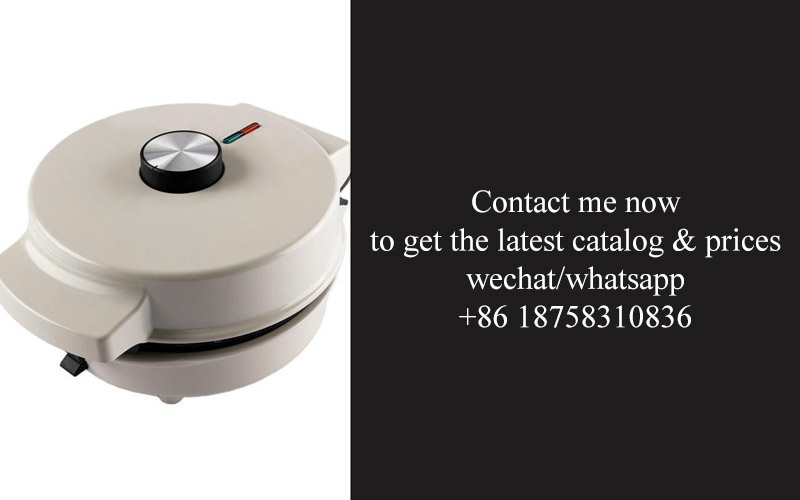
In the ever-evolving world of grill design, the role of in-house mold making is poised to revolutionize the industry. As technology advances and consumer demands shift, the future of grill design is being shaped by the capabilities and innovations that in-house mold making can offer. Here’s a glimpse into what the future might hold:
Grill manufacturers are increasingly recognizing the value of having their own mold-making capabilities. This allows for rapid prototyping and customization, ensuring that products are not only tailored to market needs but also ready to hit the shelves faster than ever before. The flexibility of in-house mold making means that designs can be fine-tuned and adjusted in real-time, reducing the time-to-market significantly.
Customization is becoming a cornerstone of consumer expectations. With in-house mold making, grills can be designed with intricate features that appeal to specific market segments. For instance, a line of grills could be crafted with ergonomic handles, unique cooking surfaces, or even smart technology integration. This level of personalization is not just about aesthetics; it’s about creating a product that resonates with the end-user’s lifestyle and preferences.
The future of grill design is also about sustainability. As environmental concerns grow, in-house mold making can facilitate the creation of grills that are not only efficient in energy use but also made from recyclable or biodegradable materials. Molds can be designed to produce parts with minimal waste, and the ability to iterate quickly means that designs can be optimized for sustainability without compromising on performance.
One of the most significant advantages of in-house mold making is the control it provides over quality. By managing the entire mold-making process, manufacturers can ensure that every grill produced meets the highest standards. This level of oversight is crucial in industries where safety and durability are paramount. The future grill designs will likely incorporate advanced materials and design techniques that can only be achieved through precise mold-making processes.
The integration of smart technology in grill design is another area where in-house mold making will play a pivotal role. As consumers demand more connectivity and functionality, grills will need to be designed with space for built-in sensors, Wi-Fi capabilities, and even voice control. In-house mold making allows for the creation of complex shapes and hollow spaces that are necessary for housing these advanced features without compromising the structural integrity of the grill.
The future of grill design will also see a push towards modular and disassembled units. This approach not only makes grills easier to transport and store but also allows for easy upgrades and repairs. In-house mold making can facilitate the production of components that are designed to fit together seamlessly, making the assembly and disassembly processes more efficient.
Another trend that in-house mold making will support is the rise of eco-friendly grills. As consumers become more environmentally conscious, there will be a growing demand for grills made from sustainable materials and with a smaller carbon footprint. In-house mold making can enable the production of parts that are lighter, more durable, and easier to recycle.
In the realm of innovation, in-house mold making will drive the development of grill designs that are both visually striking and functional. The ability to create intricate patterns and textures on grill surfaces will not only enhance the aesthetic appeal but also improve heat distribution and cooking efficiency. This could lead to grills that are not just cooking appliances but also pieces of art in a homeowner’s backyard.
Lastly, the future of grill design through in-house mold making will see a focus on user experience. By leveraging the precision and control that in-house mold making offers, manufacturers can create grills that are intuitive to use, with features that enhance the cooking experience. From easy-to-clean surfaces to user-friendly control panels, the future grill will be designed with the end-user in mind.
In conclusion, the future of grill design is bright, and in-house mold making will be at the forefront of this transformation. By embracing customization, sustainability, quality control, and innovation, grill manufacturers will be able to produce products that not only meet but exceed consumer expectations, setting new standards in the industry.